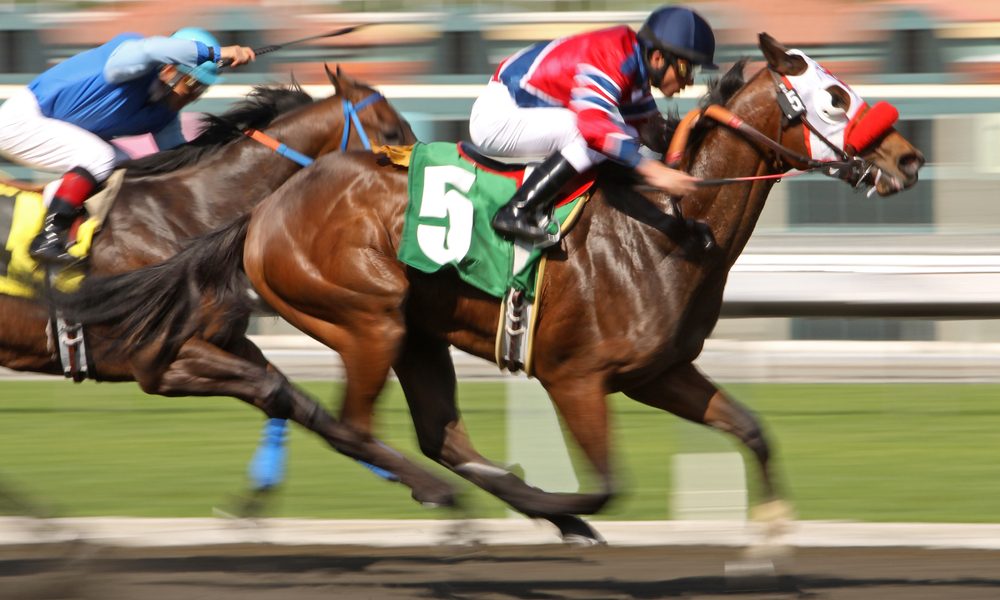Autumn is arguably the busiest time of the year for sports books in Las Vegas and gaming jurisdictions across the country, what with the NFL season approaching the half-way mark, MLB’s World Series, NCAA college football hitting crunch time, the NHL season underway, and the NBA just around the corner.
Outside of concentrated betting activity surrounding March Madness and the Super Bowl, there is no greater sustained period of time for sports fans around the world to avail themselves of getting a piece of the action via mobile sports betting apps or the camaraderie of watching the games on big screen TVs and placing bets in a sports book.
There is, however, one other annual event on the autumn sports docket that is worthy of more attention than it actually receives. The Breeders’ Cup World Championships, the Olympiad of thoroughbred racing in the United States and around the globe, will be held November 3-4 at Santa Anita.
This year marks the 40th edition of the classic 14-race competition, which was conceived in 1984 by the late horseman and breeder, John Gaines, who is known throughout the industry as the “Father of the Cup”. It was his vision to bring together the best horses representing all age groups for a year-end championship.
The Breeders’ Cup may not generate the same volume of interest that the Kentucky Derby and Triple Crown classics do in the spring of the year, but rest assured that devotees of the sport will be out in full force to serve as a reminder to casinos that the horse-betting population boasts strong numbers.
Flying “under the radar” in the exhilarating world of championship sports competition is a fate the Breeders’ Cup does not deserve. There will be $31-million in total purses distributed over the 14-race program of events, starting on Friday (Nov. 3) with a five-race card spotlighting juvenile (2-year-olds) colts and fillies in dirt and turf races of varying distances.
Santa Anita’s nine-race program on Saturday (Nov. 4) puts the accent on the 3-year-old and up divisions, matching fillies and mares as well as their male counterparts in events slated for the grass and main courses at varying distances, culminating with the $6-million Breeders’ Cup Classic at the classic American distance of 1 ¼ miles.
The competition will be televised to a world-wide viewing audience, where interest is strong not only among racing fans in the U.S. but also countries around the world, which will be represented in the Breeders’ Cup by their own champions. The rivalries create interest at the betting windows matched only by the Triple Crown.
Through the years, the Breeders’ Cup World Championships have been held at a dozen different North American race tracks, but none more frequently than this year’s venue at Santa Anita, which will be hosting its 11th Breeders’ Cup. Churchill Downs in Louisville, Kentucky ranks second with nine.
Ultimately, the Breeders’ Cup events are much more than “races”. They are athletic contests pitting horse and rider teams against one another, matching strength, stamina, and strategy with the ultimate goal being hitting the wire first.
This columnist has been convinced of this time after time, but no more emphatically than when a colt named Afleet Alex won the middle jewel of racing’s Triple Crown, the Preakness Stakes, at historic Pimlico Race Course in Baltimore, Maryland, in 2005.
No one who witnessed that event, watching Afleet Alex stumble to his knees when interfered with by another horse on the stretch turn, then recover and regain his composure to win in impressive fashion, had to be convinced thoroughbred race horses are indeed athletes.
Their innate desire to avoid danger and injury is overruled by the intense competitive spirit which burns within them, the same as in human athletes.
Afleet Alex had every reason to stop trying after he nearly fell while in full racing stride and with the stretch run imminent. He did not. If anything, the frustration of the incident appeared to make him try even harder, to become more resolute in accomplishing what his competitive nature dictated.
The colt’s young jockey, 26-year-old Jeremy Rose, was at the mercy of his mount’s keen athleticism and agility for those fleeting seconds of near disaster. Had Afleet Alex fallen, Rose would have been thrown to the track and into the paths of oncoming horses. He would have been seriously injured, if not killed.
Which brings us to athleticism of jockeys. In spite of their diminutive physical stature, they are every bit the athletes that professional team sports players and Olympians are. Pound for pound, it can be argued they are the best.
Jockeys are highly skilled, supremely coordinated and deceptively strong bundles of sinew and muscle with minds capable of executing ever changing plans of strategy and making split-second decisions. Very seldom do jockeys enjoy the luxury of making a game plan work. For them, every race is a series of audibles.
When Afleet Alex went to his knees, Rose had only his instincts and supreme sense of balance and coordination upon which to rely. A racing saddle is merely a strip of leather from which the irons (stirrups) are suspended.
Jockeys balance themselves with only the very tips of their boots in the irons. Their bottoms rarely touch the saddle. Holding a whip and the reins, very often it is grabbing a handful of the horse’s mane that serves as a stabilizer. The foundation of their skill rests on the strength of their arms and legs.
When you get right down to it, thoroughbred horse racing is the ultimate team sport. Horse and jockey complement one another, seemingly morphing into a single entity as their respective motions blend to create fluid, oft times violent, energy with one goal in mind: Winning the race.
Of the thousands of thoroughbreds foaled every year, only a small percentage of them ever make it to the races. The rest become pleasure horses, hunters and jumpers, and dressage horses.
How is this really different from the small percentage of human collegiate athletes and minor league baseball players who ever make it to the big leagues?
Furthermore, race horses are not machines. They are flesh and blood living creatures who have aches and pains, good days and bad days. They possess unique personalities, running preferences, and traits which must be recognized by their trainers in order to bring out their keenest athletic ability.
In many respects, race horses occupy a unique pedestal in the sports world. Whereas their human counterparts are permitted to compete with prescription medications in their systems, equine athletes enjoy no such luxury.
If the spirit to excel, the desire to win, and the ability to overcome adversity defines an athlete, then the very definition of the word should include a photograph of Afleet Alex winning the 2005 Preakness.
Enjoy the Breeders’ Cup World Championships!





